Visit: 2nd January 2016
After a lovely Christmas week in Cornwall (on the way home from which we stopped to visit the Cornish Mining WHS subcomponent of Tavistock) Natalie and I went to Ross’s for New Year. He and Louise had prepared a wonderful Italian feast, and we watched the London fireworks on TV with a glass of Champagne. The next morning we were up early, leaving our sleeping hosts as we set off for Luton. Our flight was on New Year’s Day, but wasn’t unusually quiet as one might expect. We arrived into Copenhagen Kastrup in mid-afternoon with the sky already darkening and twilight taking over from the Sun’s direct illumination. This was a two-night trip: our first night spent in Copenhagen city centre and the second in the north Danish town of Helsingør. Despite it being the deep midwinter it was remarkably mild on arrival, with a temperature of about 6°C.
One year earlier we had been in Malta, and the contrast with Copenhagen was sharp. In sleepy Valletta I had been able to find nothing more than a newsagent open on New Year’s Day – and even that closed at 5pm! Denmark’s capital on the same day was a hive of activity, so we had no difficulty obtaining sustenance as we wandered about its busy streets. I had a place in mind that I had read about in a Guardian city guide (often a great source of tips on where to eat). The Isted Grill is a humble takeaway that has for many years served up a peculiar fusion of Danish and Chinese food. The embodiment of this blend of cultures is the flæskesteg – a burger-type snack consisting of a fatty cut of fried pork in a bun with mayonnaise, cucumber and red cabbage. Although the crackling on the outer edges was as good as the Guardian writer describes, we found the centre to be rather lacking in flavour.
As we walked out of the hotel the next morning it became clear that the weather had turned. The wind had swung around and now blew from the east, bringing with it an icy blast from Siberia. For the rest of our time in Denmark it would be -2°C, with a wind chill factor taking it down to -12°C. Wrapping our scarves tightly we boarded the train toward our first WHS of the trip: Roskilde Cathedral.
The city of Roskilde lies 20 miles west of Copenhagen and hosts the largest of Denmark’s twelve cathedrals. It was the first Gothic cathedral to be built of brick – that being a brand-new building material at the time – and is used as the official mausoleum of the Danish monarchy. Roskilde was made capital of Denmark in the late tenth century, following the successful union by Harald Bluetooth of Denmark and Norway. His previous capital had been on the Jutland peninsular at Jelling (which we visited in March 2015), but with the addition of Norway it became necessary to move the capital closer to the kingdom’s new geographical centre.
In the fourteenth century Queen Margaret I – who had been acting as regent following the failure of her father to produce a male heir – adopted her distant relative, Eric of Pomerania, as her son and heir apparent. Margaret encouraged Denmark and Norway to join forces with Sweden in order to challenge the growing power of the Hanseatic League. She was successful, and so bequeathed to Eric what became known as the Kalmar Union. Although Margaret had requested that her final resting place be at Sorø – a small town near Copenhagen – King Eric moved her body to Roskilde Cathedral in order to make it clear that, as her heir, he was the undisputed monarch.
This marked the beginning of a royal mausoleum, which continues to this day. In chapels all around the cathedral lie kings and queens past, with the styles of decoration indicating which era they came from. For example there is the Baroque chapel of Christian IV, or the tomb of Christian IX & Louise. The latter is decorated with statues known as ‘the Mermaid’s sisters’ because they resemble the Little Mermaid statue in Copenhagen Harbour. And well they might, since they were the work of the same sculptor, Edvard Eriksen, and the model he used for the poses of all four was his wife.
Denmark still has a monarchy, and it has been decided that the tradition of interring monarchs at Roskilde will continue. One of the chapels there is empty save for a model of the sarcophagus that will be used by the current queen, Margaret II. She has chosen a very modern design with the coffin made from glass. It must have be very eery to choose, though I was relieved to read that the coffin itself will not contain the bodies of the Queen and her consort, but that they will be buried beneath it. The reason of the choice of materials is apparently to symbolise the transparency of Denmark’s modern democracy.
Having gone around the whole cathedral it was time to head back to Copenhagen and then on to Hamlet’s castle at Elsinore. The weather was still bitterly cold outside so we stopped for a bite to eat along the way, where I had my first ever cinnamon roll. What a decadent snack it turned out to be – really delicious and just the right fortification for the Arctic blasts the Danes have to put up with in the winter.
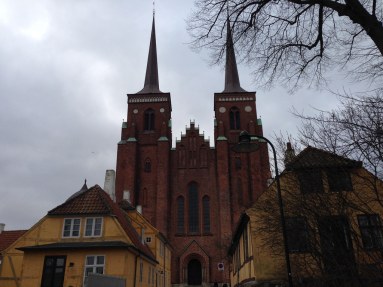
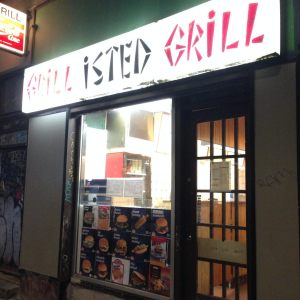
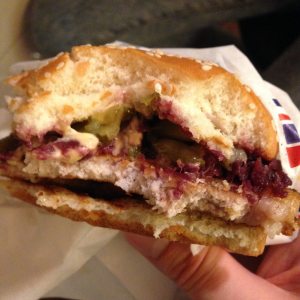
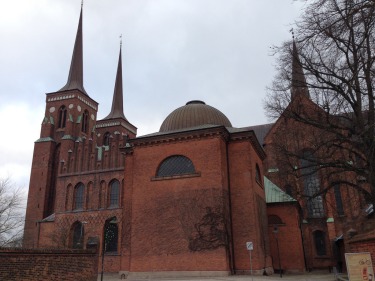
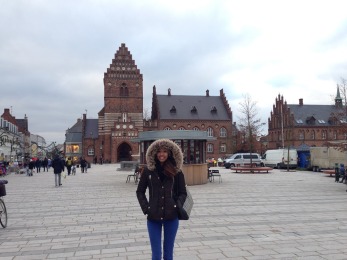
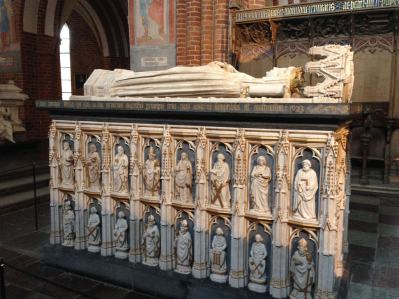
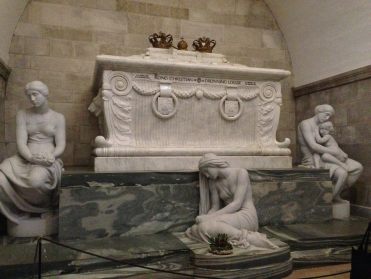
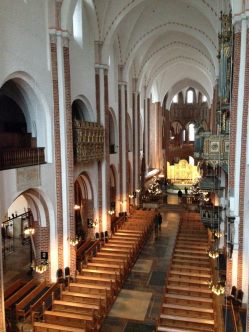
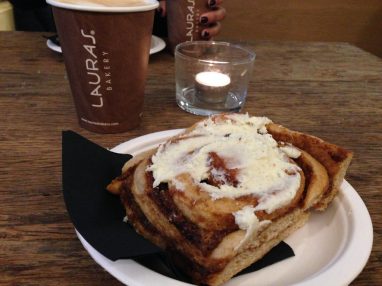
Pingback: • Kronborg Castle | Tom's World Heritage Site travel blog
Pingback: • Castle of the Teutonic Order in Malbork | Tom's World Heritage Site travel blog
Pingback: • Poblet Monastery | Tom Livesey's World Heritage Site blog